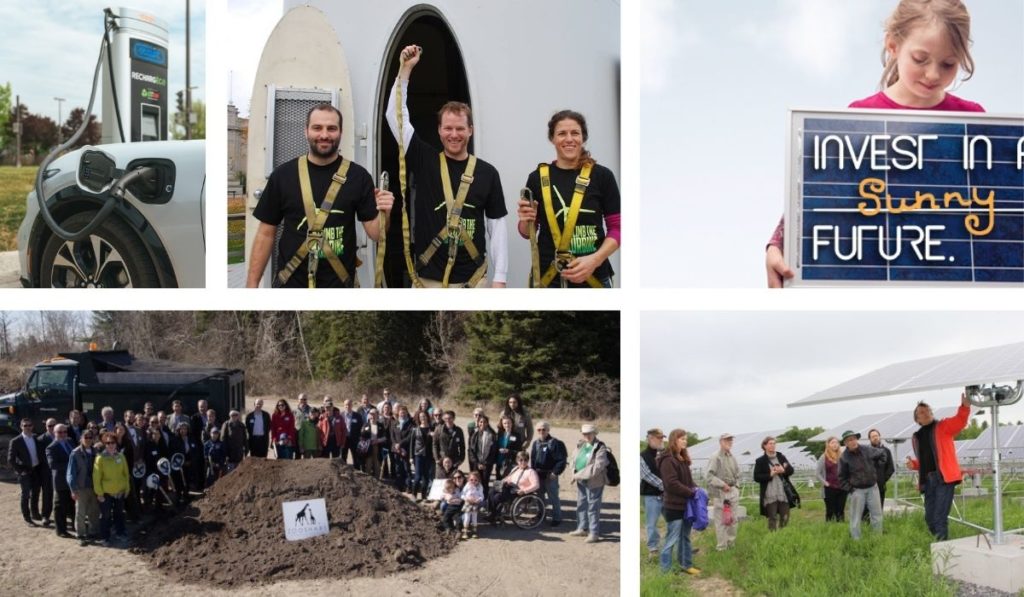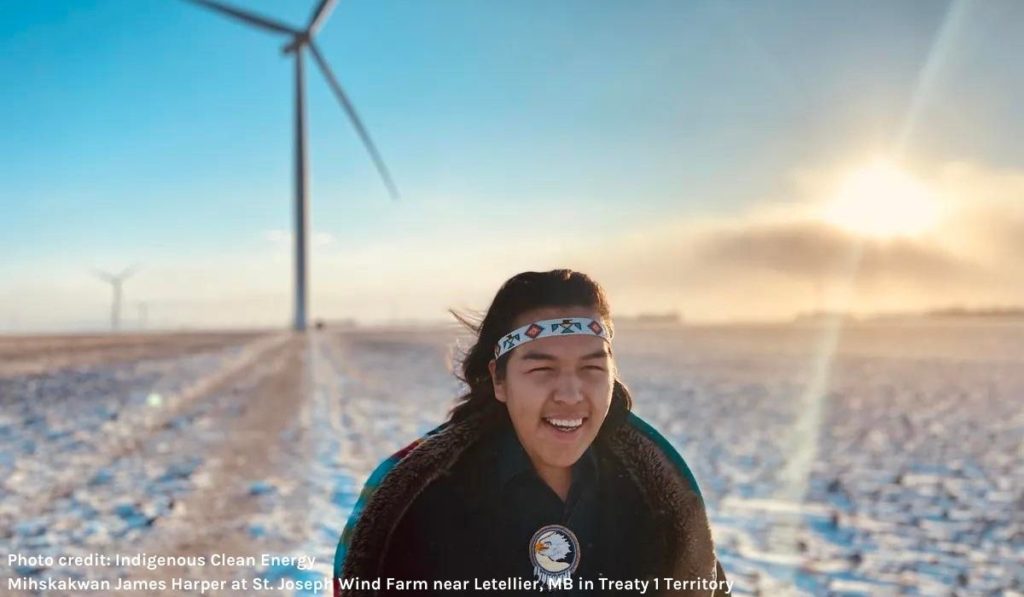Thousands of government officials, researchers and environmentalists have descended on Glasgow, Scotland for the United Nations climate summit, COP26. The goal: to get countries to commit to more ambitious plans to cut their emissions and collectively slow climate change.
The climate policies that have emerged from previous COPs have focused primarily on big-business and big-budget solutions. The lack of attention to collective action at the community level, many argue, has been a fatal flaw. This year’s COP has seen more community focused groups stepping up to the plate to make their voices heard.
What are they saying?
Community energy has an essential role to play in achieving net-zero by engaging communities in designing, adopting, and financing local climate solutions.
For those not familiar with the term, community energy refers to the delivery of community-led renewable energy and energy demand reductions, owned and/or controlled by communities.
Community energy benefits local economies
Beyond the important role of communities in project design, most community energy projects also involve an element of community financing. Whether this is in the form of a debt or equity stake, communities stand to benefit significantly. In fact, a Scotland based study that was launched in the lead up to COP26 illustrated that community wind projects deliver 34 times the community benefit of commercial installations.
In Canada, there are 65 renewable energy generation co-ops incorporated, with approximately 30 of them active. Aside from co-operatives, community energy projects may also be initiated by non-profits; charities; First Nations, Metis and Inuit; educational or health institutions; municipalities; and other community-based groups.
Community investment for community energy
Tapestry has long been involved in community energy, supporting renewable energy cooperatives to leverage community support and tap into private capital. To learn more about our parent organization, the Toronto Renewable Energy Co-operative (TREC) and our 25 year history, read our story ici.
 We have supported in raising and managing investment for 53 community energy projects in Canada. Our work dates back to supporting Canada’s very first renewable energy co-operative, WindShare. Their wind turbine project at the CNE is collectively owned by over 600 community members and Toronto Hydro, and has become a beacon for community-led climate action.
We have supported in raising and managing investment for 53 community energy projects in Canada. Our work dates back to supporting Canada’s very first renewable energy co-operative, WindShare. Their wind turbine project at the CNE is collectively owned by over 600 community members and Toronto Hydro, and has become a beacon for community-led climate action.
Today, we continue to work closely with Canada’s renewable energy co-ops, many of whom were initially inspired by the perseverance and success of WindShare. SolarShare, for example, is Canada’s largest and most successful renewable energy co-op with over 2,000 members, who have collectively invested more than $70 million in solar PV and earned over $9 million in returns. Their projects annually generate over 17 million KWh of electricity, resulting in annual greenhouse gas emissions reductions of more than 500 tonnes of CO2e.
So what do we hope to see as a result of COP26?
This year, among Canada’s delegates to the conference, are several representatives from Indigenous Clean Energy (ICE), a non-profit group emphasizing the social, economic and environmental benefits that can result when First Nations, Inuit and Métis communities are full or part-owners of energy projects.
“Indigenous-led renewable energy in remote areas on Turtle Island (Canada) is making lasting and positive impacts to energy systems, environmental protection, social programs and circular economies,” said Chris Henderson, Executive Director of ICE in a recent press release. “The power of community-led initiatives go beyond measure and need to be at the forefront of climate action.”
 We echo the recommendations that have been made by Chris, Mihskakwan James Harper and other delegates from ICE – we urge governments to think big but to also think small. Specifically, about how projects financed and owned by communities can help power a lower-carbon world.
We echo the recommendations that have been made by Chris, Mihskakwan James Harper and other delegates from ICE – we urge governments to think big but to also think small. Specifically, about how projects financed and owned by communities can help power a lower-carbon world.
What can the Canadian Government do to support Community Energy?
- Implement a social investment tax relief program, which would offer tax relief to investors to support investment into social purpose organizations that experience difficulty accessing financing and that deliver social/environmental benefits.
- Provide federal loan guarantees for co‑op projects. Federal loan guarantees could quickly reduce the cost of raising funds for co‑op projects while adding little risk for the federal budget.
- Support community energy and co-op investment funds that can provide traditional sources of financing and also complement co-operative members’ investments with quasi-equity (subordinated debt).
- Finally, the Canadian government could also create a Community Power Production Incentive directly targeted to projects that improve community energy self‑sufficiency and climate resilience. This could help close the gap faced by community power developers (co‑ops, First Nations, schools, etc.) for higher deployment costs they incur compared to commercial developers that do not have the overhead involved in attracting and administering individual community investments.
For more recommendations, read the TREC report Accelerating Renewable Energy Co-operatives in Canada.
“I cannot emphasize enough that people need to be engaged in a societal effort to reach net-zero emissions,” says Mary Warner, Co-executive Director of Tapestry Community Capital and TREC. “We need energy production that is owned by local people for the benefit of local people. For this to happen, people and communities must be at the heart of climate policy.”

